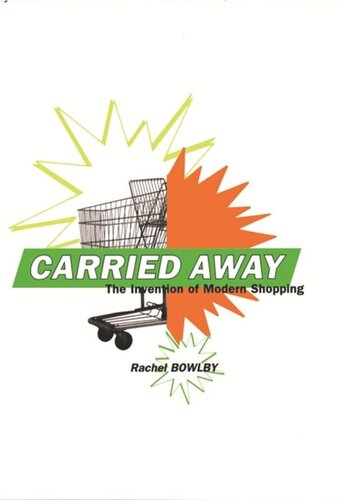

Most ebook files are in PDF format, so you can easily read them using various software such as Foxit Reader or directly on the Google Chrome browser.
Some ebook files are released by publishers in other formats such as .awz, .mobi, .epub, .fb2, etc. You may need to install specific software to read these formats on mobile/PC, such as Calibre.
Please read the tutorial at this link: https://ebookbell.com/faq
We offer FREE conversion to the popular formats you request; however, this may take some time. Therefore, right after payment, please email us, and we will try to provide the service as quickly as possible.
For some exceptional file formats or broken links (if any), please refrain from opening any disputes. Instead, email us first, and we will try to assist within a maximum of 6 hours.
EbookBell Team

4.4
102 reviewsAsserting that a history of shopping has been, until recently, a history of women, Bowlby trains her eye on the evolution of the modern shopper. She examines the curious history of our ideas about women and consumption—from the glamorous nineteenth-century department store to our own functionalist superstores, using a compelling blend of history, literary analysis, and cultural criticism to explore the rise of department stores and supermarkets in the United States, France, and Great Britain.
Asserting that a history of shopping was, until recently, a history of women, Rachel Bowlby trains her eye on the evolution of the modern shopper. She uses a compelling blend of history, literary analysis, and cultural criticism to explore the rise of department stores and supermarkets of the United States, France, and Great Britain.
Bowlby recalls the fascinating early days of these institutions. In the mid-nineteenth century, when department stores first developed, their fabulous new buildings brought middle-class women into town, where they could indulge in what was then a new activity: a day's shopping. The stores offered luxury, flattering women into believing that they belonged in a beautiful environment. It is here, Bowlby argues, that the idea of the modern woman's passion for fashion and shopping took hold.
Developed in the twentieth century, supermarkets took an opposite tack: they offered functionality, standardization, and cheapness. However, Bowlby claims, despite their differences, the two institutions belong together as emblematic of their respective eras' social developments: the department store with the growth of cities, the supermarket with the proliferation of suburbs. With their dazzling lights and displays, both supermarkets and department stores were thought to produce in females an enhanced or trance-like state of mind.
For readers who regard shopping as a spectator or participatory sport, and for those who wish to understand our culture and the psychology of women, or those who simply enjoy a witty, literate romp through the aisles, Carried Away is the perfect purchase.